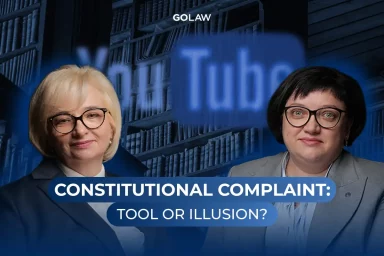Legal risks and peculiarities of investing in property near water bodies
Despite the attractiveness of being located near water, water fund land has a special legal status, which significantly affects the possibility of using it for investment. These lands are mostly in state and municipal ownership, cannot be privatised and have strict restrictions on their use, including development. Investing in property located near water bodies may involve a number of risks.
Water fund lands include land occupied by:
- seas, rivers, lakes, reservoirs, other water bodies, swamps, and islands not covered by forests
- coastal protection strips;
- hydrotechnical and other water management structures and canals, as well as land allocated for their right-of-way;
- coastal strips of waterways; artificially created land plots within the waters of seaports.
In accordance with the Procedure for the Use of Water Fund Lands, the use of lands of coastal protection strips along rivers, around water bodies and on islands is subject to restricted economic activity. Activities that adversely affect or may affect their condition or contradict their purpose are prohibited on these lands.
Ukrainian legislation establishes coastal protection zones, which are strips along rivers, lakes, estuaries and seas subject to a strict development regime.
The Water Code defines the standard widths for these strips: 25 m (small rivers and ponds <3 hectares), 50 m (medium rivers, large ponds) and 100 m (large rivers, lakes) from the water's edge. For seas and bays, a coastal protection zone of at least 2 km from the shore is established, but within settlements, the width of such a zone is determined by comprehensive plans for the spatial development of territories of territorial communities, master plans of settlements, and in the absence of such plans or if the boundaries of such zones are not established by the said urban planning documentation, they are determined by a width of 100 metres.
The absence of a land management project or the exact boundaries of the coastal strip does not mean that it does not exist. By law, the widths of the strip are set by regulation and are automatic. The Supreme Court emphasises that the existence of the coastal strip is determined by law, even if the boundaries are not approved by the documentary record (Supreme Court Resolution of the CCC of the Supreme Court of 17.09.2024 in case No. 910/10049/22).
Any construction on these territories, except for special hydraulic or port facilities, is prohibited. The Supreme Court has repeatedly confirmed that the Land Code of Ukraine does not and has not provided for the possibility of leasing a land plot within the coastal protection zone for the construction and maintenance of a residential building, outbuildings and structures.
The land in the coastal zone belongs to the state or community and is classified as “water fund land”. The law prohibits its transfer to private ownership or lease for commercial development.
Facilities built in violation of these regulations are recognised as unauthorised construction and are subject to demolition. Ownership of such buildings does not arise – the Civil Code expressly provides that a person who has carried out unauthorised construction does not acquire ownership of such real estate.
Regarding the transfer of ownership and lease of water fund lands
Article 59 of the Land Code of Ukraine states that water fund lands may be owned by the state, municipalities and private entities.
- Regarding private ownership
Pursuant to paragraph (g) of part four of Article 83 of the Land Code of Ukraine, communal lands that cannot be transferred to private ownership include water fund lands, except in cases specified by the Land Code of Ukraine.
Citizens and legal entities may, by decision of executive authorities or local self-government bodies, be granted free of charge ownership of enclosed natural reservoirs (with a total area of up to 3 hectares). Owners may create fishery, anti-erosion and other artificial reservoirs on their land plots in accordance with the established procedure.
Thus, Ukrainian legislation restricts the free transfer of water fund lands to private ownership to the transfer of only enclosed natural reservoirs (with a total area of up to 3 hectares) by decision of an authorised body.
The acquisition of water fund lands by citizens and legal entities (transfer of ownership of these lands to them) contrary to the requirements of the Land Code of Ukraine is impossible; the location of water fund lands indicates the impossibility of a private owner, and therefore a new owner, except as provided for in Article 59 of this Code (resolutions of the Grand Chamber of the Supreme Court of 11 September 2019 in case No. 487/10132/14-ц, of 15 September 2020 in case No. 372/1684/14-ц).
- Regarding the lease of water fund lands.
In accordance with the current legislation, executive authorities or local self-government bodies may lease land plots of coastal protection strips, right-of-way and coastal strips of waterways, lakes, reservoirs, other water bodies, swamps and islands from the water fund for haymaking, fisheries (including fish farming (aquaculture), cultural, recreational, sports and tourist purposes, research, care, accommodation and maintenance, as well as for other purposes.
Thus, despite the ban on privatisation, the law allows for the use of water fund lands for special projects:
- aquaculture (fish, shrimp, mussel breeding);
- recreational activities (creation of recreation centres, tourist sites, campsites);
- scientific or environmental projects;
- water transport infrastructure or hydraulic structures.
A lease may be executed for both land and a water body (e.g., a pond or lake), often in the same agreement (the so-called complex lease).
Water fund lands may be leased only for limited purposes, in particular, in accordance with the designated purpose of such lands. For example, according to Annex 59 “Classifier of types of designated purpose of land plots” to the Procedure for Maintaining the State Land Cadastre, approved by Resolution of the Cabinet of Ministers of Ukraine No. 1051 dated 17.10.2012, the category of land “water fund lands” includes 16 designated purposes.
The legislator clearly limits the functions of such land: for example, the law allows the lease of coastal strips only for economic activities within the framework of fishing, recreation, scientific needs, etc.
Lease of water fund lands is not just a contractual registration of a plot, but a whole procedure that requires compliance with a number of mandatory stages. Failure to do so may result in any use of such land being deemed illegal. In particular, this procedure consists of the following steps:
- availability of land management documentation
Before talking about leasing, you need to make sure that the land plot:
- is included in the State Land Cadastre (SLC);
- has a specific designated purpose that meets the plans of the future user (e.g. recreation, fisheries, water supply);
- is agreed with the relevant authorities — environmental and water management authorities, if it concerns areas with a high environmental protection status or located within water protection zones.
Without these conditions, the lease will be legally null and void, and any further investment will be at risk.
- land auctions (auction)
Lease of state and municipal land is carried out exclusively through electronic auctions.
There are exceptions, but they apply only to certain categories of users, such as state-owned water companies or scientific institutions.
Thus, an investor should prepare to participate in a competitive procedure with open bids and transparent conditions.
- state registration of the agreement
Even after the lease agreement is concluded, the document does not come into force until it is registered in the State Register of Real Property Rights.
Only from the moment of registration does the lessee receive a full-fledged right of use, with the possibility of conducting business activities, submitting permit applications, developing projects, etc.
Conclusions
Investing in real estate near water bodies or in water fund lands requires special care. These lands have a special legal status, privatisation restrictions and strict conditions of use. Any construction or use without complying with legal requirements may result in the object being declared unauthorised and demolished. Nevertheless, investors have access to legal mechanisms of use, primarily lease at public auctions for targeted projects (aquaculture, recreation, science, port infrastructure). Successful investment is only possible if it is legally verified and all the regulated procedures are followed.

Ihor Selivakin
Associate, Attorney at law
- Contacts
- 31/33 Kniaziv Ostrozkykh St, Zorianyi Business Center, Kyiv, Ukraine, 01010
- i.selivakin@golaw.ua
- +380 44 581 1220
Get in touch
To get a consultation, please fill out the form below or call us right away:Sign up to be aware
New achievements are inspired by information. GO further, don’t miss out GOLAW news and legal alerts
Our expertise
- Energy and Natural Resources
- Antitrust and Competition
- Banking and Finance
- Compliance, Corporate Governance and Risk Management
- Corporate and M&A
- Criminal and White Collar Defence
- Defense in Anti-corruption procedures and regulations
- Labor and Employment
- Natural Resources and Environment
- Government Relations (GR)
- Insolvency and Corporate Recovery
- Intellectual property
- International trade
- Legal support of business and private Сlients in Germany
- Litigation and dispute resolution
- Private clients
- Real Estate and Construction
- Restructuring, Claims and Recoveries
- Martial Law
- Tax and Customs
- Agribusiness
- Aviation
- Chemical industry
- Engineering, Construction and Building Materials
- Environment and Natural Resources
- Financial institutions
- IT and AI
- Industry and manufacturing
- Healthcare industries, Life sciences and Pharmaceuticals
- Media, Entertainment, Sports and Gambling
- Retail, FMCG and E-Commerce
- Transport and Logistics
We use cookies to improve performance of our website and your user experience.
Cookies policy
Cookies settings







